SubLIME – Experiment
SubLIME – Experimental Setup
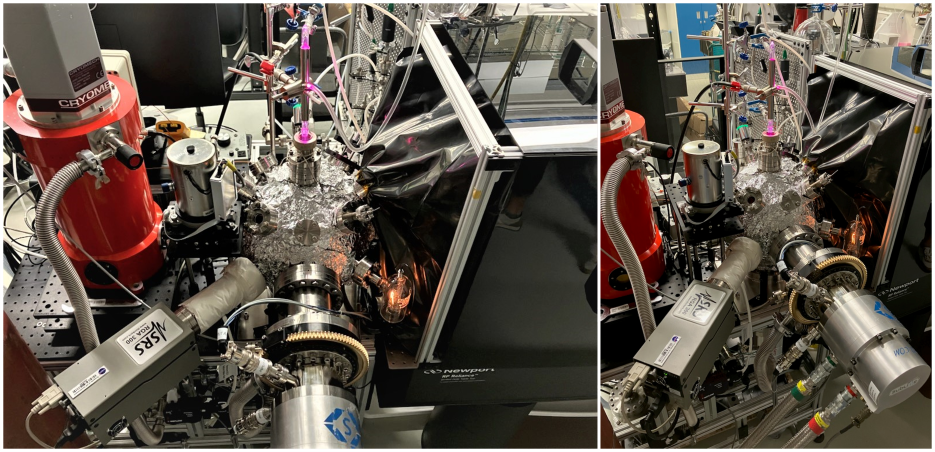
Our experiments take place in an ultrahigh vacuum chamber (pressure ~ 10-9 Torr). The ice samples are formed at the center of the chamber on a gold substrate, attached to a three-stage cryostat and closed-cycle helium cryocooler, which can reach temperatures as low as 10 K (-261°C; -438°F). This chamber is equipped with instruments that allow us to combine the techniques of infrared (IR) spectroscopy, mass spectrometry, and millimeter/submillimeter (mm/submm) spectroscopy to study the chemical and physical processes in laboratory analogs of interstellar ices and icy planetary/cometary surfaces. The composition of the ice samples are monitored with Fourier-transform infrared (FTIR) spectroscopy (Thermo Scientific Nicolet™ iS50 spectrometer). Simultaneously, the ice sample can be exposed to ultraviolet (UV) photons from a microwave-discharged hydrogen flow lamp. As the ice sample is photolyzed, molecules leave the ice surface, as an effect of sublimation due to heat or UV photodesorption. These gas-phase products are then probed using direct-absorption millimeter/submillimeter spectroscopy, which allows for the unique identification and quantification of sublimated gas products. Our laboratory-measured millimeter/submillimeter spectra can then be compared to telescope data as a means of elucidating the gas compositions observed in interstellar clouds, the comae of comets, and the atmospheres/exospheres of other icy planetary bodies.
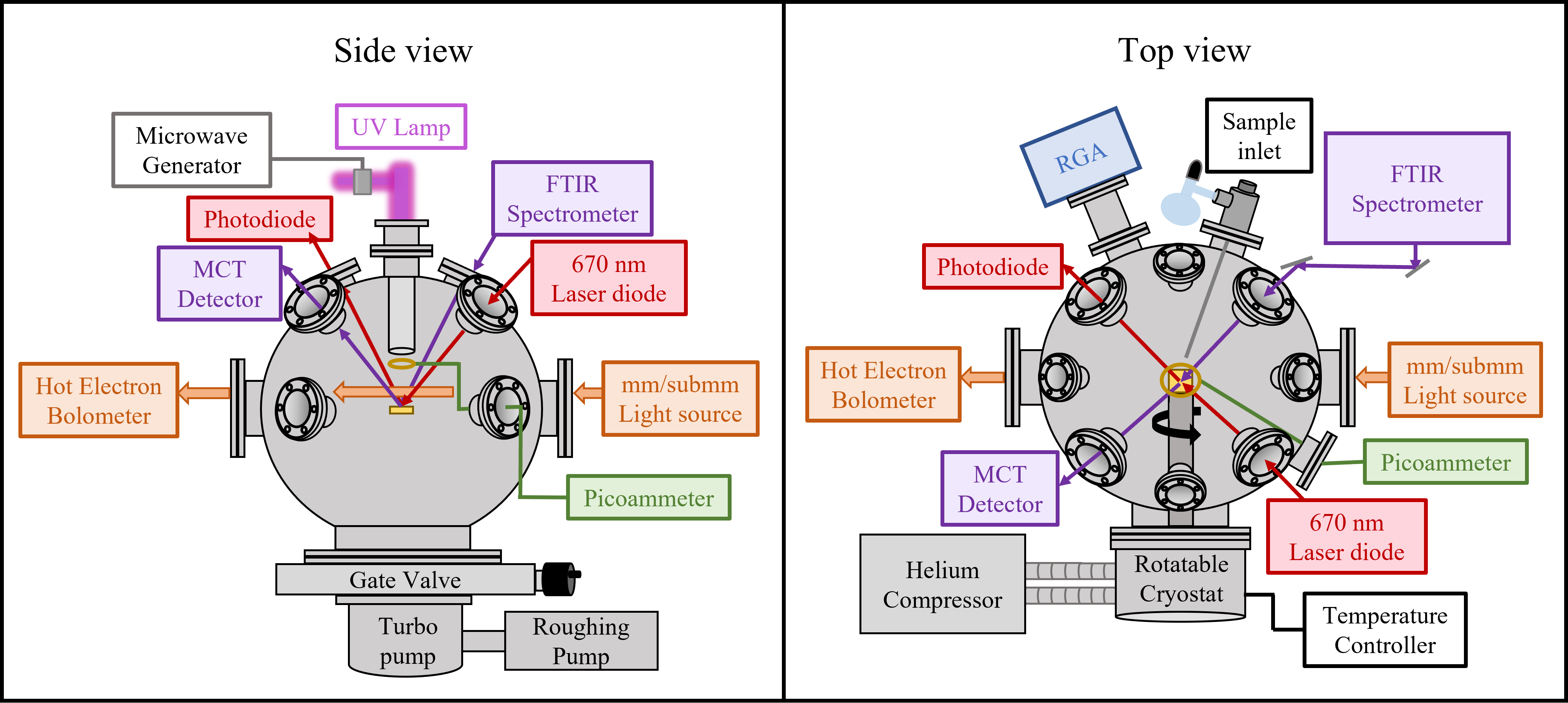
A schematic diagram of the SubLIME chamber. On the left is a top-down view and on the right is a side view. The ice sample is formed at the center of the chamber on the gold substrate at ~10 K. The sample can be fully rotated in the chamber. There are several ports on the top of the chamber that are used for creating multi-component ice sample mixtures, and a 670 nm laser interferometry technique is used to monitor the ice sample thickness during sample formation. The UV lamp, on top of the chamber, is attached to a fused silica waveguide that directs the UV photons toward the sample, increasing the photon flux and reducing the amount of photons that collide with the vacuum chamber walls. During UV photolysis, the solid ice-phase chemistry is monitored with the FTIR spectrometer and the gas-phase chemistry above or around the ice sample is monitored with the mm/submm spectrometer and the RGA (Residual Gas Analyzer i.e., a quadrapole mass spectrometer).
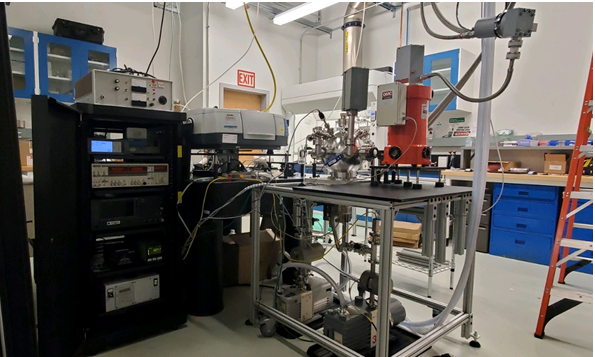
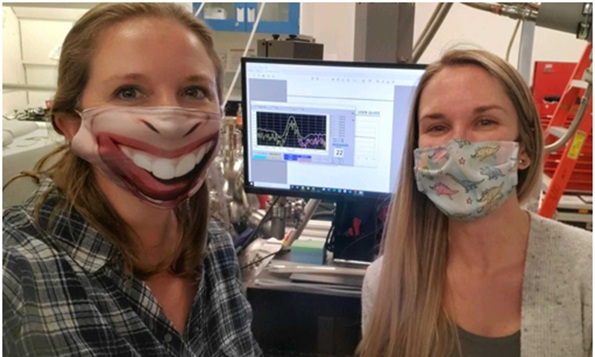
Stefanie (left) and Katarina (right) captured SubLIME's first light at NASA GSFC on 5/12/2021!
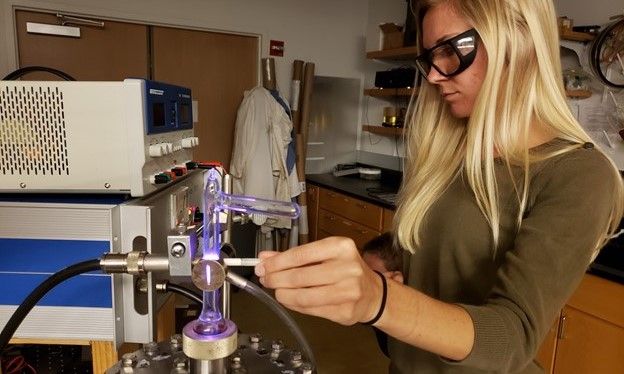
Katarina Yocum working with the Lyman-α lamp settings.
Millimeter/Submillimeter spectrometer system
The gases released during our thermal or photodissociation experiments are probed by sampling the vapor ∼ 1 cm above the ice layer (this distance is constrained by the mm/submm beam size) using direct-absorption mm/submm spectroscopy. The source is an RF signal generator (Agilent Technologies E8257D PSG) coupled with a set of multiplier chains that generate harmonics of the input frequency. The output frequency coverage of our setup is 75-1000 GHz, 1.8-1.9 THz, and 2.5-2.6 THz, and spectra are collected with 0.1 MHz resolution. The radiation passes over the gold substrate and is detected by a cryo-cooled InSb hot-electron THz bolometer (QMC Instruments QNbB/PTC). The signal is processed using a lock-in amplifier (Stanford Research SR830 DSP) to increase the signal-to-noise ratio, resulting in second-derivative line shapes.
